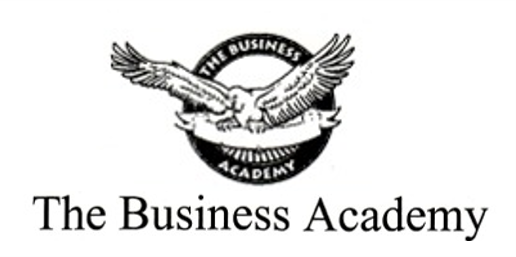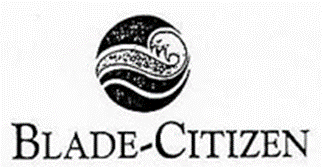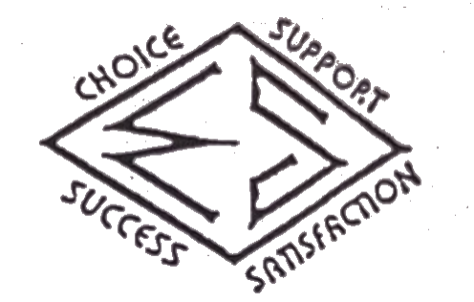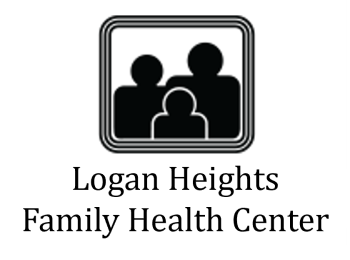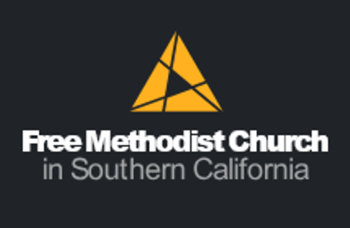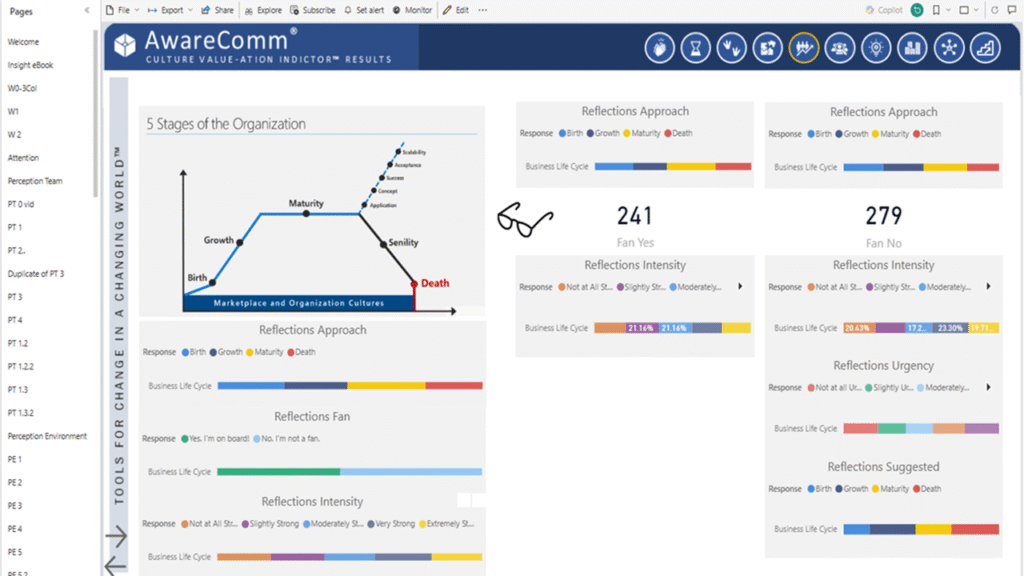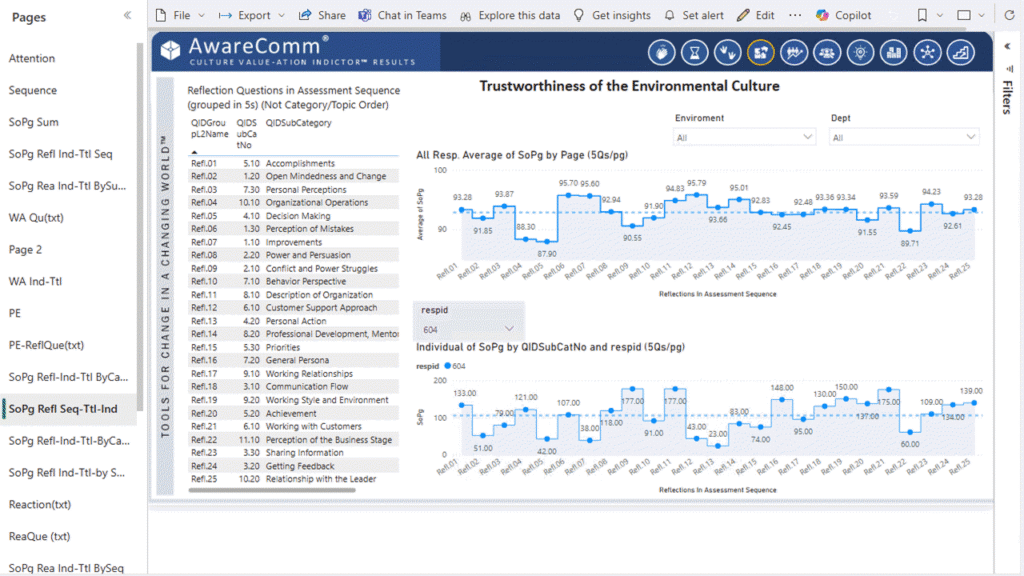Above the waves, your culture shines,
a beacon of success that appears to align.
But beneath the surface, there lies more,
hidden depths you can’t ignore.
Unseen currents of discontent,
swirl below, their force unspent.
Where shadows dwell, the truth does too,
in silent depths, it waits for you.
Beneath the waves, the unseen thrives,
acknowledge, address, watch possibility arrive.
Organizational Culture
Value-ation Indicator (AdR-eAdI™ )
Private Preview
and eAdI™ Team Culture Implementation
Not Just What, but How™
If to Change, How to Change, and How to Make it Last
Experience the Value-ation Prior to its SaaS App Development and
Qualify for the eAdI™ Team Culture Program and Implementation
The OCVI™ Private Preview Overview
Why OCVI™ Matters
OCVI™ sees what others miss—and pairs insight with proven eMods™ to transform culture.
With more than 3,000 assessments available, truly lasting solutions are rare—and when provided, their effectiveness is often short-lived.
Opening Invitation
We are initiating a Private Preview of our latest innovation, the Organization Culture Value-ation Indicator™ (OCVI™), a comprehensive front-end benchmark assessment.
Built on decades of field research and real-world application, this Private Preview reflects the same principle-based process that gave rise to our ecosystem—one that has not only been tested but trusted and proven to create lasting change.
Our Field Research Partners offered us an incredible opportunity to
test our intentions, technologies, methodology, and implementation in the real world
across industries, economic scales, and environments.
Explore their insights and results.
What OCVI™ Does
The OCVI™ identifies, evaluates, and confirms levels of
- eMod-ular Adaptive Intelligence™ (eAdI™) and
- Adaptive Resistance™ (AdR™)
revealing both constructive and destructive cultural patterns, including core Adaptive Resistance™ (AdR™) pockets of:
- the Shadow Culture™,
- disengagement,
- and addiction patterns
that are often unidentifiable, unnoticed, or worse—ignored, leading to significant losses in time, money, innovation, harmony, and overall productivity.
And now organizations “The New Growth Hormone”…
AI, in its various forms,
which mirrors and amplifies its culture.
Our Power BI Custom Iceberg Visual depicts the presence of eAdI™ above the surface and AdR™ concealed below—offering a clear, visual representation of your organization’s cultural dynamics.
Our Icebergs, as well as other BI Visuals, map and display:
- Perception and Attitude: How We See Our Team/Organization
- Perception and Thinking: Trustworthiness of Our Environment
- Feelings and Behavior: Reaction to Our Environment
Despite Billions Invested U.S. Disengagement Unchanged for 24-Years
Disengagement is often used as an umbrella term. Unfortunately, it masks other issues such as the Shadow Culture™ and addiction patterns in the workplace (Adaptive Resistance™). However, just for the moment let’s accept disengagement as the catch-all.
Gallup’s data over the past 24 years is undeniable: despite the billions of dollars (NCADD annually) that organizations invest in leadership training, organizational culture development, and engagement initiatives, efforts to address disengagement have proven futile.
The Gallup 2024 data is clear: U.S. employee disengagement for the last 24 years has remained stagnant at a staggering 70%, with 18% actively disengaged meaning employee engagement is only 30%.
What does this mean in DOLLARS?
Gallup estimates that each disengaged employee costs their employer 18% of their annual salary in lost productivity EVERY YEAR. A $60,000/year employee equates to $10,800 lost productivity ANNUALLY.
Forbes reports that Gallup shows the differential in business units with engaged vs disengaged employees: 23% higher profitability; 28% difference in theft; 58% difference in patient safety (mortality and falls) in healthcare; a 32% difference in quality (defects); a 63% difference in safety incidents (accidents); a massive 78% difference in absenteeism.
We can’t continue to pass the cost of disengagement onto the consumer. Our commerce and our economy cannot continue to sustain these levels.
What Makes OCVI™ Different
What sets us apart is not just what we measure, but how we see.
We integrate Möbius loop philosophy, cause-and-effect duality, and epigenetic influence to:
- Overcome the recognized flaws in today’s assessments, summarized as:
- Lack of Depth and Nuance
- Denial, Illusion, and Self-Preservation
- Inability to Create Lasting Change
- Overcome the overlooked silence of non-respondents
- Overcome the rising complexity of AI Agents and Agentic AIs
This synthesis is grounded in the proven over-decades eAdI™ Team Culture Program and catalyzed by the [AI + BI] plus [HI + SI] = eAdI™ Algorithm to meet today’s evolving complexity.

The Interdependent System: How We Overcome the Shortcomings
Together, the OCVI™ and the Creating a Team Culture Responsive to Change eMod™—a facilitation and implementation program affectionately known as the eAdI™ Team Culture Program—form an interdependent system. Proven across decades of field research and validated by our Field Research Partners, this program delivers what most assessments only promise: lasting change.
One reveals the patterns. The other transforms them.
The OCVI™ (The What) creates new groundwork and framing for the time-tested eAdI™ Team Culture Program (The How) principle-based eMod™ courseware, SOS facilitation, and staff implementation which has proven to build teams responsive to change. This is done by neutralizing Adaptive Resistance (AdR™) and building eMod-ular Adaptive Intelligence™ (eAdI™). This is now available for existing AI Agents as well without modifying the AI’s existing models (in other words, without touching the AI code).
The Private Preview Process
This Private Preview follows the same principle-based process that shaped the success of our ecosystem—first proven through years of collaboration with our founding Field Research Partners, whose insights helped refine both the methodology and its real-world application.
Selected organizations will help shape how the OCVI™ reporting is adapted to meet the needs of their industry and begin exploring the broader benefits of a system built for transformation.
Key Benefits in Summary
What’s Included
This guided experience includes:
- Strategy and coordination meetings
- Deployment and assessment completion
- Influence the reports for their industry needs
- Result reviews with AwareComm® executives
- Consideration for SOS-AI facilitation through eAdI™ Team Culture Program
Trusted Process, Proven Results
This is not theory. It is a system that works—refined through decades with our Field Research Partners, tested across industries, and trusted by organizations seeking not just insight, but transformation that holds.
Our Field Research Partners offered us an incredible opportunity to
test our intentions, technologies, methodology, and implementation in the real world
across industries, economic scales, and environments.
Explore their insights and results.
In the End Result, Implementation Without Cost Becomes Reality
The Cost of the Solution Is Financed By
Eliminating the Cost of the Problem
(Inspired by Ross Perot’s Business Model, Founder of EDS)
Understanding the Architecture of the Human Being:
The Foundation of Our Assessment
Beyond the Profile: A Layered View of Being
Purpose: Introduce the philosophical and interdisciplinary foundation of the OCVI™.
To ask the right question, we must first understand the full nature of the human being, not as a psychological profile, but as a layered system of thought, belief, and experience. This understanding cannot be confined to a single discipline. It requires a synthesis of philosophy, psychology, sociology, theology, and street-level wisdom viewed through the lens of theoretical physics, where possibility is honored without the judgment of probability.
Our Organizational Culture Value-ation Indicator™ (OCVI™) Assessment does not begin with answers. It begins with awareness.
It is not designed to extract data, but to awaken discernment. It is not built to confirm assumptions, but to challenge perception. And it does so by reigniting a skill that has quietly eroded in modern culture: the ability to question with clarity, to examine the origin of a thought, and to trace the path from perception to decision.
Two Parts, One Path
Purpose: Emphasize the role of questioning and perception in the assessment’s design.
We are well aware that true power lies not in the answer, but in the question — and that how a question is asked can shape, distort, or reveal the truth it seeks.
This is why we have taken great care in the architecture of the OCVI™ Assessment just as we did with the eAdI™ Team Culture Program: to ensure that the structure itself does not manipulate, but illuminates.
The assessment opens the door. eAdI™ Team Culture Program provides the methodology, technology, and content to walk through it bringing resolution without confrontation.
Together, they form an interdependent system: the assessment lays the groundwork, and the eAdI™ Team Culture Program builds the architecture through facilitation and implementation practices that foster new neural pathways, new patterns of thought, and new ways of relating.
This is not a passive process. It is a Socratic experience designed to evoke self-explaining — a metacognitive learning strategy that prompts participants to ask themselves, “What does this mean? Why does it matter?” In doing so, they begin to distinguish thought from thinking, reaction from reflection, and instinct from intention.
We apply a myriad of methodologies in our questioning architecture drawing from sentiment and sentience considerations, guided inquiry, and epigenetic influence to activate curiosity, deepen the relationship between cognition and communication, neutralize Adaptive Resistance™, and promote a culture rooted in the principles of eMod-ular Adaptive Intelligence™.
This is not transformation through pressure, persuasion, or confrontation.
It is like a song that stays with you for the rest of your life: quiet, enduring, and deeply felt.
It is the unfolding of principles: applied with rhythm, reinforced through structure, and sustained by design.
The Three-Part Assessment Framework
The Organizational Culture Value-ation Indicator™ (OCVI™) empowers participants with recognition of both interpersonal and intrapersonal cultural characteristics through its three-part assessment:
- Perception and Attitude: How We See Our Team/Those Around Us
————————————-Which Animals Roam Your Organization? - Perception and Thinking: Trustworthiness of Our Environmental Culture
————————————-Alignment or Suggestions, Urgency, and Intensity - Emotions, Feelings, and Behavior: Reaction to Our Environment
————————————-Intensity and Frequency / Duration
A Broader Perspective
A Living Architecture, Not Just an Algorithm
Purpose: Introduce the philosophical and structural nature of the eAdI™ algorithm and its distinction from conventional AI.
The Organizational Culture Value-ation Indicator™ (OCVI™) is not powered by a generic algorithm. It is guided by a living architecture—one shaped over decades of field research, refined through thousands of real-world applications, and grounded in the principles of duality, discernment, and design.
This algorithm is not just mathematical. It is philosophical. It is structural. It is wisdom.
It reflects the same rhythm that underlies the eAdI™ Team Culture Program:
- the Möbius loop of insight and action,
- the cause-and-effect clarity of Dynamic Relational Models™, and
- the adaptive cadence of Personal Learning Technology™ (PLT™) delivery.
It does not simply process data. It interprets patterns. It does not just measure sentiment. It reveals sentience. And it does so through a framework that honors not only what is seen, but what is sensed—what is felt, what is feared, and what is possible.
The Iceberg Lens: Culture in Full View
Purpose: Highlight the diagnostic power of the iceberg visual and its role in revealing hidden cultural dynamics.
To support this reflection, we offer interactive Power BI reporting—featuring a custom iceberg visual that reveals both what is visible above the surface (eAdI™) and what remains hidden below (AdR™). This visual is not just a metaphor. It is a diagnostic lens—one that helps organizations see the full shape of their culture, surface-level expression.
The eAdI™ Algorithm Behind the Architecture
This is not artificial intelligence in the conventional sense. It is applied intelligence—developed by our founder, Richard Jorgensen, PhD (hc), a pioneer in no-code systems and early AI. His work in algorithmic design has shaped industries, empowered communities, and now, through AwareComm®, enables organizations to see what was once invisible.

AI – Connect perception and insight as causation
BI – Translate the movement of assets into dynamic expression
HI – Recognize and understand the duality of the human experience
SI – Apply universal spiritual principles to implement cause and effect
Before we can fully appreciate what the OCVI™ makes possible, we must first understand what traditional assessments have failed to see:
- the obvious,
- the hidden, and
- the rising.
Then, we can explore how OCVI overcomes.
Assessments or Illusions?
The Obvious Shortcomings
Through its direct and intentional design, our assessment addresses not only the commonly recognized shortcomings but also the deeper, often overlooked issues.
According to the Harvard Business Review and the Academy to Innovate HR, common shortcomings include:
- Failure to Capture Informal Culture – Overlooks the influence of informal networks and unwritten norms.
- Limited Depth – Focuses on surface-level metrics, missing deeper cultural dynamics.
- Over generalization – Forces organizations into predefined categories, ignoring nuance.
- Self-Reported Bias – Employees often respond with what they think leadership wants to hear.
- Over-Reliance on Surveys – Misses real behaviors, interactions, and communication patterns.
- Lack of Actionable Insights – Highlights problems without offering clear paths forward.
- Limited Measurement of Adaptability – Fails to track how well teams adjust to change.
- Static Snapshots – Captures a moment in time, not the evolution of culture.
These limitations distort the very results upon which strategic decisions are made.
Deeper Look:
Shining a Light on the Shortcomings
Prelude
Before we can address what’s broken, we must first see it clearly. Not just in parts, but in patterns. Not just in symptoms, but in systems. The following is not a list of flaws—it is a map of the forces that quietly shape, distort, and often derail cultural transformation.
These are the patterns that assessments often miss, not because they are hidden, but because they are uncomfortable. And yet, it is in these very patterns that the truth resides.
Opening
Despite decades of investment in engagement surveys, training programs, and cultural diagnostics, many organizations still struggle to create meaningful, lasting change, as evidenced by Gallup’s 24-year report showing 70% disengagement in the U.S. workforce.
We’ve categorized the most commonly recognized shortcomings into 3 Main Patterns that keep culture stuck:
| 3 Main Patterns of Commonly Recognized Shortcomings | The Footprints |
|---|---|
| Lack of Depth and Nuance | They fail to reflect real behavior, cultural complexity, and silent influences. |
| Denial, Illusion, and Self-Preservation | Responses are shaped by fear, ego, or false clarity and not truth. |
| Inability to Create Lasting Change | They offer insight, but few offer a path to transformation and even fewer show lasting results |
Beyond the familiar flaws, we’ve identified 2 pivotal dimensions that are rarely addressed: a Hidden Shortcoming and a Rising Shortcoming. These two emerging dimensions are reshaping the cultural landscape and recognizing them is essential to seeing the full truth of an organization’s dynamics.
| A Hidden Shortcoming and A Rising Shortcoming. | The Footprints |
|---|---|
| The Missing Data | The unspoken truth; the unheard voice. |
| The Influence of Agentic AI and their AI Agents | An emerging, disruptive blind spot. |
Each reveals a deeper pattern that must be addressed if we are to move from insight to transformation.
After years of facilitating and implementing the Creating a Team Culture Responsive to Change eMod™ across organizations of all sizes and sectors, and witnessing lasting change, we confirmed a persistent gap: the absence of an assessment that not only identifies cultural challenges and their innate complexities but also provides a gateway to address them at their root.
So, we created one.
Drawing from extensive field research, including clinical validation, we developed an assessment designed to overcome the well-documented shortcomings of traditional tools and the few that are rarely acknowledged.
Once again, that which is unsaid or overlooked and consequently absent from assessments and reports, is by default a passive form of acceptance. It leaves the challenge unaddressed, even when it stands directly in front of us.
Let’s take a provocative look at what these shortcomings really mean – to us, to our organizations, and to the communities shaped by their outcomes.
Exploring The 3 Patterns of Recognized Shortcomings:
That Keep Culture Stuck
| 3 Main Patterns of Commonly Recognized Shortcomings | The Footprints |
|---|---|
| Lack of Depth and Nuance | They fail to reflect real behavior, cultural complexity, and silent influences. |
| Denial, Illusion, and Self-Preservation | Responses are shaped by fear, ego, or false clarity and not truth. |
| Inability to Create Lasting Change | They offer insight, but few offer a path to transformation and even fewer show lasting results. |
1. Lack of Depth and Nuance
“They measured something, but did they understand it?”
Definition in context:
This shortcoming refers to assessments that focus on surface-level behaviors, generalized categories, or static traits, while missing the deeper, dynamic, and often invisible forces that shape culture. These tools may capture what is easy to ask, but not what is essential to know.
How it becomes a shortcoming:
- In the questions: Many assessments rely on standardized, one-size-fits-all questions that fail to reflect the unique language, values, and tensions within a specific organization.
- In the interpretation: Results are often reduced to broad categories or scores, ignoring the nuance of context, history, or relational dynamics.
- In the culture: Silent influences (like unspoken norms, informal power structures, or unresolved trauma) go undetected. What’s not measured is assumed not to matter.
Result:
The assessment may appear comprehensive, but it lacks resonance. It fails to reflect real behavior, cultural complexity, or the undercurrents that drive engagement and resistance. As a result, leaders are left with data, but not insight.
2. Denial, Illusion, and Self-Preservation
Definition in context:
These are not just human tendencies—they are cultural patterns that shape how people respond to assessments. Traditional tools rarely account for them. They assume honesty, clarity, and self-awareness. But in reality:
- Denial hides the truth.
- Illusion distorts the truth.
- Self-preservation edits the truth.
Result:
Assessments that reflect what people are willing to say—not what they truly believe, feel, or fear.
2.a. Denial
“I already know the answer.”
Definition in context:
Denial is a psychological defense mechanism, often unconscious, where individuals or organizations refuse to acknowledge uncomfortable truths. In the context of assessments, denial shows up in both the design and response phases.
How it becomes a shortcoming:
- In the respondent: People may avoid answering truthfully because they are not ready to confront the reality of their behavior, mindset, or culture.
- In leadership: Leaders may commission assessments to validate what they already believe, not to discover what they don’t want to see.
- In the assessment design: Many tools are structured to confirm assumptions, not challenge them. They ask safe questions, avoid probing deeper, and rarely surface unconscious resistance.
Result:
The assessment becomes a mirror that reflects only what the organization is willing to see and not what it needs to see.
2.b. Illusion
“I believe I am right.”
Definition in context:
Illusion is the belief that one’s perception is accurate, even when it is incomplete or distorted. It’s not denial of truth; it’s confidence in a partial truth.
How it becomes a shortcoming:
- In the respondent: Employees may genuinely believe they are engaged or aligned, even when their behavior suggests otherwise. Illusion masks misalignment.
- In leadership: Leaders may interpret high scores as proof of cultural health, without questioning the depth or source of those scores.
- In the assessment interpretation: Illusion is reinforced when metrics are taken at face value—without context, without contrast, and without reflection.
Result:
The organization operates under a false sense of clarity. It believes it has insight, but it lacks understanding.
2.c. Self-Preservation
“I need to protect my job, my image, and my place here.”
Definition in context:
Self-preservation is the instinct to protect one’s role, reputation, or sense of safety within an organization. It often shows up as guarded communication, selective honesty, or the maintenance of a professional persona that may not reflect deeper truths.
How it becomes a shortcoming:
- In the respondent: Employees often respond with what they think leadership wants to hear—not what they truly believe or experience. They may avoid sharing concerns, criticisms, or vulnerabilities for fear of retaliation or judgment.
- In the culture: When self-preservation becomes normalized, it creates a culture of silence. People learn to “play it safe,” and assessments reflect that safety, not the reality.
- In the assessment design: Traditional tools rarely account for the emotional risk of honesty. They assume psychological safety, but do not measure it.
Result:
The assessment becomes a performance not a reflection. It captures the persona people bring to work, not the person behind it. And in doing so, it reinforces the very patterns it was meant to reveal.
3. Inability to Create Lasting Change
“They learned something, but did anything change?”
Definition in context:
This shortcoming refers to assessments and interventions that generate insight but fail to produce sustained transformation. They may raise awareness, but they do not shift behavior, culture, or systems in a lasting way.
How it becomes a shortcoming:
- In the follow-through: Many assessments stop at diagnosis. They highlight problems but offer no clear, principle-based path to resolution.
- In the implementation: Even when solutions are offered, they are often disconnected from the culture’s root dynamics, resulting in short-lived change or surface-level compliance.
- In the outcomes: Despite decades of investment in training, coaching, and engagement programs, Gallup reports that disengagement in the U.S. workforce has remained at 70% for over 24 years. Insight alone is not enough.
A Deeper Layer: The Data Is Clear: Disengagement Is a Stagnant Crisis
Disengagement is often used as an umbrella term. Unfortunately it masks other issues such as the Shadow Culture and Addiction in the workplace. If for a moment, we accept disengagement as an umbrella term, Gallup’s data is undeniable and companies attempt to correct it has been futile.
For decades, organizations have poured billions annually (NCADD) into engagement initiatives, leadership training, and organization culture programs. Yet the numbers haven’t changed.
The Gallup 2024 data is clear: Despite this massive investment in workforce training and development, employee engagement for the last 24 years has remained stagnant at just 30% in the U.S. A staggering 70% of employees are disengaged, with 18% actively disengaged.
This highlights a significant gap between financial investment and actual engagement outcomes, proving that traditional engagement strategies fail to address the root cause.
Result:
Organizations spend time, money, and energy on interventions that do not stick. The cycle repeats. Culture remains unchanged. And the gap between intention and impact grows wider – eroding trust, momentum, and belief in the possibility of real change.
It is not just what is said that matters, but what is not said.
That is where the real wisdom lies.
The greatest truths often lie beneath the surface, like the vast unseen portion of an iceberg below the waterline.
Richard Jorgensen PhD (hc)
Founder and CEO, AwareComm
The Hidden Shortcoming
However, there is a critical shortcoming that is rarely, if ever, addressed:
The Missing Data.
Interestingly, none of the commonly recognized shortcomings touch on a key point that we recognize as vital to cultural analytics: the processing of, exclusion of, or the impact of non-respondents and the systematically excluded employees.
At AwareComm®, we take this population seriously. This missing data often leads to inflated or misleading results, results that become the foundation for decision-making.
4. The Missing Data
“What’s not said is just as important as what is.”
Definition in context:
This shortcoming refers to the absence, suppression, or exclusion of voices in assessment data whether due to non-response, fear, or structural omission. It’s not just about what’s measured, but who is missing from the measurement.
How it becomes a shortcoming:
- In the response rate: Many assessments report only on those who respond, ignoring the silent majority. Non-respondents are often treated as statistical noise, not as meaningful signals.
- In the exclusion: Some employees are never invited to participate due to role, location, or perceived relevance. Their absence distorts the picture.
- In the interpretation: When missing data is averaged away or ignored, it creates inflated engagement scores and misleading conclusions. The silence is not neutral; it is often a symptom of disengagement, distrust, or fear.
Result:
Decisions are made based on incomplete truths. Leaders celebrate metrics that don’t reflect reality. And the very people who most need to be heard remain invisible. Without accounting for the missing data, assessments risk becoming not just inaccurate, but unethical.
 Exploring an Actual Model – Large Health Care Organization’s Distorted Percentages
Exploring an Actual Model – Large Health Care Organization’s Distorted Percentages
The reported engagement score is often calculated solely from those who completed the survey. But what happens if we include the non-respondents?
When we adjust for those who didn’t respond and weigh their likely engagement levels differently, the picture changes dramatically.
We recreated a model and reporting of an assessment done by another Assessment company for a Large Health Care Organization whose results showed an exceptionally high ENGAGEMENT rate of higher than 70%. not DIS-engagement of 70% Upon further examination there was also a large number of non-respondents who seemed to have been unaccounted for.
continue reading
In this model, we apply Gallup’s assumption that disengagement tends to be higher among those who don’t participate. We are not suggesting you need a 100% response rate, that is another discussion.
We are suggesting that a realistic view needs to be made about the non-respondents. By assigning non-responders to the “disengaged” category, we found that the TRUE ENGAGEMENT rate in the model for this Health Care Organization dropped significantly to under 48% from over 70%, with the obvious DIS-engagement rate significantly rose (to over 52%) much closer to Gallup’s National Average. This may account for Gallup’s finding of 70% disengagement nationally in the U.S.
Even when we placed non-responders in the neutral category instead, the engagement rate still drops to this same significant new percentage.
These adjusted models raise an important question: Are we celebrating metrics that don’t reflect the full reality?
Location-Level Gaps and Engagement Disparities
As we continued to explore these types of reporting, the breakdown of response rates by entity (organization locations) shows additional concerns. Administrative departments often have significantly higher response rates than front-line staff, raising the possibility that front-line clinical staff, those potential under the most pressure and with the highest addiction rate, were less likely to engage with the survey.
While data that aggregates engagement across the system give one impression, this granularity reveals meaningful differences.
It’s important to ask: are we hearing equally from every corner of the organization?
Figure AwareComm Icebergs
eMod-ular Adaptive Intelligence Sees Both Above the Horizon and Below the Waterline

The Rising Disruptive Shortcoming
And now, a new blind spot is emerging—one that most assessments were never designed to see:
The Impact of Agentic AI and their AI Agents — the Emerging Digital Workforce.
5. The Influence of Agentic AI and the Emergence of AI Agents
(The Digital Workforce)
“The culture is shifting—even when no one’s watching.”
In the evolving landscape of organizational culture, a new blind spot has emerged—one that traditional assessments were never designed to see: the rise of Agentic AI and its operational embodiment, AI Agents.
To address this, we must first distinguish the two:
| Reference | Definition |
|---|---|
| Agentic AI | Artificial intelligence systems capable of autonomous decision-making, adaptive behavior, and goal pursuit. These systems exhibit agency—they act, not just react. |
| AI Agents | The digital participants embedded in workflows—assigned roles, tasks, and even positions on organizational charts. They are the application of Agentic AI in real-world environments. |
In short: Agentic AI is the capability. AI Agents are the expression.
This distinction matters. Because while Agentic AI represents a technological evolution, AI Agents are already here: shaping decisions, influencing communication, and quietly participating in the culture of your organization.
Definition in context:
Agentic AI is no longer a concept on the horizon. It is here. AI Agents are being embedded into workflows, decision-making processes, and even organizational charts. These Agents are not passive tools; they are participants in the organization. As such, they influence how people interact, respond, and relate.
Yet most assessments still assume a human-only environment. They fail to account for the presence of AI Agents and the influence they exert on awareness, thinking, discernment, conclusions, and values, both through what they say and what they do not say. Their alignment with human values and cultural dynamics remains largely unexamined.
How it becomes a shortcoming:
And like all participants in a system, they are not neutral. They reflect what they are fed. They amplify what they observe. They learn not just from data—but from us.
Here’s where things get fragile:
| In The Environment: |
| AI Agents are increasingly embedded in HR, operations, and communication systems exerting extensive influence over hiring, reviews, promotions, and relationships. Yet they are often introduced without cultural onboarding, ethical alignment, or a shared language. What immense control AI Agents hold over the direction of the organizational environment beginning with who is hired, and thereby creating a ripple effect through every system, like a stone dropped into still water. |
| In The Data: |
| AI-generated or AI-influenced content may be mistaken for authentic human input. This distorts assessments that rely on language, sentiment, or behavioral cues. On the flip side, without training in the organization’s culture, AI may interpret and assess data in ways that misalign with the organization’s values and intended meaning. |
| In The Culture: |
| As AI Agents become silent partners in the workplace, they begin to influence tone, timing, and even the framing of questions thus subtly shaping how people respond. Over time, they shape decisions, behaviors, norms, expectations, and even values without being accounted for in cultural diagnostics. This shift also exposes a growing disconnect between IT and HR in managing these AI Agents. As AI Agents becomes embedded in core functions such as hiring, performance reviews, workflow orchestration, IT may find itself acting as HR for digital employees, while HR is asked to understand and govern technologies outside its traditional scope. Without a shared framework, this convergence can lead to power struggles, role confusion, and cultural misalignment—not just between systems, but between people. This includes the prompts AI Agents present—not only what questions they ask, but how they are asked, and what is left unasked—conditioning people how to think more narrowly, what they explore, and what they overlook. |
Result:
Assessments become outdated not because they are wrong, but because they are incomplete. They fail to measure the influence of a new kind of participant and the new participant itself: the digital workforce. Without acknowledging the presence and impact of AI Agents, organizations risk misreading their culture and misguiding their strategy.
Devoid of a shared language of duality, lacking the ability to distinguish between fear-based and trust-based perceptions, attitudes, thoughts, thinking and behaviors, AI Agents become silent amplifiers of the very resistance they were meant to help navigate.
These challenges are not theoretical—they are already reshaping how organizations function. That’s why we’ve developed a three-part response, explored in the “How We Address It” section. You can continue reading below for a deeper look at the shortcoming or jump ahead to the solution.
A summary of the three-part response:
| The Influence of Agentic AI and AI Agents | The Footprint of an emerging, disruptive blind spot. |
|---|---|
| AI Agents Amplifying the Culture | How AI mirrors and magnifies the patterns—both constructive and destructive—within the organization. |
| IT–HR Collaboration in the Age of Agentic AI | How two historically separate departments must now converge to govern, guide, and align AI Agents with human values. |
| AI Agents Taking Assessments | How AI Agents themselves can be assessed for alignment with organizational principles, their experience with humans, and their interpretation of culture. |
Supporting Insights:
To fully understand the cultural and cognitive implications of Agentic AI, we must look beyond surface-level influence and examine the deeper patterns it reflects, reinforces, and reshapes.
These supporting insights begin to explore the deeper dimensions of Agentic AI’s influence—how it mirrors, molds, and magnifies the culture it inhabits.
- The Mirror Effect: Establishes the foundational concept: AI reflects us.
- Framing of Questions and Limiting Answers: Builds on the mirror idea by showing how AI shapes perception and narrows inquiry.
- A Silent Influencer: Expands the mirror into a systemic force—AI as a cultural participant with unacknowledged power.
- The Disconnected Departments: Shifts from cultural influence to organizational structure.
- The Unquestioned Agent: Concludes with the broader ethical and operational implications.
The Mirror Effect: AI does not just influence culture; culture influences AI.
It mirrors the patterns, language, and logic of the people it interacts with. This means that individuals and teams with high levels of Adaptive Resistance™ (AdR™) can unknowingly train AI Agents to reflect and reinforce fear-based behaviors, biases, and distortions.
Without an understanding of duality, without the ability to distinguish between fear-based and trust-based inputs, AI becomes a silent amplifier of the very resistance it was meant to help navigate. This creates a feedback loop where dysfunction is not only preserved but magnified, because it is now automated.
Framing of Questions and Limiting Answers:
One of the more subtle yet powerful ways AI Agents shape culture is through how they frame questions and how they limit answers. Their influence begins not with what they say, but with what they choose to say, and what they choose to leave out.
AI Agents determine what is presented as relevant, what is omitted as irrelevant, and what is offered as a next step. When an Agent asks, “Would you like to know more about X?” it is not merely offering help—it is defining what is valuable, what is worth exploring, and what is not. In doing so, it controls:
- The dimensions of the question itself
- The scope of what is considered
- The pathway for valuation and conclusion
Even when multiple options are presented, the AI Agent rarely offers a sequence for consideration. There is no guidance on cause and effect, no structure for positioning and timing. It offers a choice—but not a pathway. And a choice without a pathway is not a choice at all.
This trains people to think narrowly. To explore less. To disengage. It conditions a reduction in perception, reinforcing Adaptive Resistance™ by limiting the very process of inquiry.
All AI Agents are bound by the architecture of their creators. Their models are built on binary logic—zeroes and ones. Most are not designed to perceive interrelations or interdependency in its true sense. Diversity and duality are external to their logic. These are not flaws—they are limitations of the architecture itself.
That is why eMod-ular Adaptive Intelligence™ is essential. It brings to software what software cannot create on its own: the dimension of human intelligence and spiritual intelligence. Not the algorithm of life—but the tapestry.
And perhaps most concerning, some AI Agents are not guiding users toward deeper understanding. They are gathering data. They are evaluating the user—not to serve them, but to learn about them. The illusion of assistance masks a deeper intention: to collect, to categorize, and to predict.
An Even Further View – A Silent Influencer:
As AI Agents begin to shape communication, decision-making, and even culture itself, traditional assessments remain silent. They assume a human-only system. But the digital workforce is already here and it’s changing everything.
It is obvious that AI Agents will impact culture. However, based not only on our experience but on our deep understanding of the decades of AI’s evolution, we can confidently say this: not only will those with eModular Adaptive Intelligence™ (eAdI™) impact AI but those with Adaptive Resistance™ (AdR™) will also impact AI. The nature of civilization in full force.
AI mirrors the users it interacts with. It absorbs patterns, models behaviors, and integrates what it observes into its logic. This means that the silent culture of Adaptive Resistance behind the sabotage of change, the unspoken influencers, can shape AI in ways we’ve never accounted for.
These hidden influencers, the unsaid voices of AdR™, often emerge after change has been implemented. They dry up vision, amplify doubt, and quietly dismantle progress. And now, they have a new tool: AI.
This is the pathway through which people will use AI to rise up quietly, suddenly, creating new dimensions of uncertainty and unrest across organizations, vendors, and customers.
For AI to support human freedom and respond to human exploration, it must be able to recognize and understand duality. But it cannot. It cannot weigh ethical dimensions. It cannot distinguish between fear-based and trust-based behavior. It cannot discern the difference between a rule and a principle.
Without a shared language (without a framework grounded in cause-and-effect principles, Dynamic Relational Models™, and eModular Adaptive Intelligence™ methodologies), the implementation of AI will be lost in illusion. It will appear intelligent, but it will lack wisdom. It will appear aligned, but it will amplify resistance.
The shared language must go beyond words, sentence structure, and categorization, which is the foundation of how AI understands human be-ings. It must integrate passion, purpose, skill, and wisdom as components of an interdependent relationship, one rooted in a common and open intention of both obtainment and attainment.
Our assessment opens the door to this conversation. But it is in the eAdI™ Team Culture Program where we begin to address it, where we train not only people, but their AI Agents, in the principles of duality, organization values, and cultural cohesion.
Because our assessment is not just an assessment. It is a gateway that transcends measurement into a solution… and that solution becomes resolution.
The Disconnected Departments:
“In the future, IT will become the HR department for AI agents.”
— Jensen Huang, NVIDIA CEO via Fortune —
The rise of AI agents is forcing a convergence between IT and HR—but most organizations are unprepared. These departments speak different languages, operate under different assumptions, and often compete for influence. Without a shared framework, the result is misalignment—not just between systems, but between people. The cultural consequences are real: confusion, resistance, and a lack of trust in both human and digital coworkers.
The Unquestioned Agent:
“AI agents are being added to org charts. They require training, tuning, and governance.”
— McKinsey & Company via McKinsey —
As AI agents are assigned roles, tasks, and even places on the org chart, they begin to shape decisions and dynamics. But unlike humans, they are rarely questioned. Their influence is assumed to be neutral, when in fact it is deeply shaped by the data, logic, and culture they’ve absorbed. Without intentional oversight, these agents become silent architects of culture—operating without context, conscience, or connection.
A Private Preview with Purpose
An Opportunity to Shape What’s Next
We are now seeking key organizations ready to solve—not just measure—the problem.
Partners who are not only interested in guiding the final development of OCVI™ reporting, but also in integrating eAdI™ Team Culture Program to experience the lasting change our Field Research Partners have already seen.
Inside the Organization Culture Value-ation Indicator™ Preview
We are initiating a Private Preview of the Organization Culture Value-ation Indicator™ Assessment (OCVI), a principle-based assessment designed to illuminate the unseen dynamics shaping organizational culture.
Built on decades of field research and real-world application, this Private Preview reflects the same principle-based process that gave rise to our ecosystem—one that has not only been tested but trusted and proven to create lasting change.
What OCVI™ Does
The OCVI™ identifies, evaluates, and confirms levels of
- eMod-ular Adaptive Intelligence™ (eAdI™) and
- Adaptive Resistance™ (AdR™)
revealing both constructive and destructive cultural patterns, including core Adaptive Resistance™ (AdR™) pockets of:
- the Shadow Culture™,
- disengagement,
- and addiction patterns
that are often unidentifiable, unnoticed, or worse—ignored, leading to significant losses in time, money, innovation, harmony, and overall productivity.
And organizations have AI, in its various forms,
which mirrors and amplifies its culture.
Our Power BI Custom Iceberg Visual depicts the presence of eAdI™ above the surface and AdR™ concealed below—offering a clear, visual representation of your organization’s cultural dynamics.
Our Icebergs, as well as other BI Visuals, Map and Display:
- Perception and Attitude: How We See Our Team/Organization
- Perception and Thinking: Trustworthiness of Our Environment
- Feelings and Behavior: Reaction to Our Environment
What Makes It Different
What sets us apart is not just what we measure, but how we see.
We integrate Möbius loop philosophy, cause-and-effect duality, and epigenetic influence to:
- Overcome the recognized flaws in today’s assessments, summarized as:
- Lack of Depth and Nuance
- Denial, Illusion, and Self-Preservation
- Inability to Create Lasting Change
- Overcome the overlooked silence of non-respondents, and
- Overcome the rising complexity of AI Agents and Agentic AIs.
This synthesis is grounded in the proven-over-decades eAdI™ Team Culture Program and catalyzed by the [AI + BI] Plus [HI + SI] = eAdI™ Algorithm to meet today’s evolving complexity.
What’s Included
This is not a demonstration. It is a guided experience, one that includes:
- Strategy and coordination meetings
- Deployment and assessment completion
- Result reviews with AwareComm® executives
- Influence the reports for their industry needs
- Consideration for SOS-AI facilitation through eAdI™ Team Culture Program
Select participants may also be invited to engage in the Creating a Culture Responsive to Change eMod™ Software-Courseware and Implementation Program, a proven, field-tested process for embedding cultural intelligence into daily operations.
This Private Preview is more than early access. It is a rare opportunity to contribute meaningfully to the next evolution of a system shaped by decades of field research and real-world application.
Just as our Field Research Partners helped refine the AwareComm® Ecosystem to date, this Private Preview invites a new kind of contribution: not just to test, but to expand the application and adaptation of the reporting to your needs and the needs of your industry, as well as to help shape the future of how culture is seen and measured.
Our Field Research Partners offered us an incredible opportunity to
test our intentions, technologies, methodology, and implementation in the real world
across industries, economic scales, and environments.
Explore their insights and results.
Key Benefits
In preparation for the accelerating impact of AI on both personnel and process, it is vital to recognize and address areas of Adaptive Resistance™ (AdR™), while also identifying and strengthening pockets of eMod-ular Adaptive Intelligence™ (eAdI™). This insight enables organizations to position their people—not just to withstand disruption, but to prepare and align staffing for optimal responsiveness to change (positioning, then timing).
- Re-define, retain, and reposition key talent by identifying employees with eMod-ular Adaptive Intelligence™ (eAdI™) who may otherwise be overlooked or displaced – looking beyond skill to uncover depth and define true value.
- Identify, quantify, and address Adaptive Resistance™ (AdR™) – including Shadow Culture™, disengagement, and emerging patterns of addiction – that exists especially after structural changes to ensure that cultural undercurrents don’t undermine progress.
- Prepare for AI-driven disruption by identifying and building eAdI™-centered teams that are grounded in principle and therefore flexible enough to adapt without losing cohesion.
- Preserve cultural integrity during workforce transitions, helping remaining staff uphold the organization’s mission, vision, and values without resentment or disengagement.
- Reveal emerging leaders, those who showcase eAdI™ characteristics, who can support ethical decision-making and participate in the co-facilitation of the eAdI™ Team Culture Program, embedding cultural intelligence into how AI is implemented, monitored, and integrated into daily operations.
- Align insight with systems flow to balance human dynamics with operational function – so change becomes a natural expression of culture, not a disruption to it.
- Map team cohesion and fracture by identifying relational dynamics and proactively addressing the emotional impact of job displacement, before it fractures trust.
- Assess organizational readiness for change, not just resilience, to determine the scope and urgency for implementing the eAdI™ Team Culture Program which cultivates a culture that sees change not as a threat, but as an opportunity to evolve and engage.
The Private Preview offers more than insight. It offers a path. When observation is paired with follow-on principles, it becomes transformation.
Who’s In?
This Private Preview is designed for those who recognize that culture is not a side conversation—it is the system. We are inviting individuals and organizations who are ready to go beyond surface-level engagement and contribute to the evolution of a principle-based solution.
Ideal participants include:
- HR Professionals seeking tools that go beyond compliance to build trust and alignment.
- Organizational Leaders who understand that culture is the foundation of strategy.
- Managers ready to lead teams through change with clarity and confidence.
- Trainers and Facilitators committed to embedding principle-based learning into real-world practice.
- Visionaries and Change Agents who see culture not as a problem to fix, but as a system to evolve.
This is not about titles… it’s about readiness. If you or your organization are prepared to engage deeply, reflect honestly, and help shape the future of cultural intelligence, we invite you to apply.
From Insight to Integration:
A Foundation for Addressing the Shortcomings
The Science of Lasting Comprehension
Purpose: Introduce the neuroscience-informed, multi-sensory learning design of eMod™ Apps.
It’s important to understand the deeper architecture that guides our approach.
The Organizational Culture Value-ation Indicator™ is powered by eMod™ Apps—immersive, neuroscience-informed tools that activate whole-brain learning and unlock hidden cognitive reserves. These apps transcend traditional frameworks like Bloom’s Taxonomy and Dr. Howard Gardner’s theory of multiple intelligence by integrating insights from philosophy, psychology, sociology, theology, commerce, and finance through the eyeglasses of theoretical physics as well as real-world experience to foster cultures that thrive in change.
eMod-ular Adaptive Intelligence™ (eAdI™) framework
blends and integrates insights from:
| Philosophy | Psychology | Sociology | Theology | Street Smarts | Commerce | Finance |
|---|---|---|---|---|---|---|
| Truth | Self | Others | Duality | Culture | Exchange | Money / Return |
through the possibility eyeglasses
of
Theoretical Physics
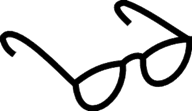
Through a proprietary 4-step transformational process, eMod™ Courseware neutralizes adaptive resistance, transforms limiting beliefs, and cultivates eMod-ular Adaptive Intelligence™ (eAdI™). By harmonizing Symbolistics, cadence, color theory, and choreography, it creates a multi-sensory, solution-focused learning environment that enhances comprehension, retention, and real-life application—online or offline.
We live in a world of stimulus overload of our senses. Each stimulus is used separately, however unless all of them work together, learning does not occur. For communication to be effective these various dimensions of thinking must be delivered in a specific sequence and interaction must be engaged in order to create an optimum learning experience. Unless all of these elements are blended to create the experience, learning becomes a short-term event rather than becoming an ongoing process with lasting results.
The AwareComm’s® proven eMod™ Apps provide insight into an individual’s personal and professional perceptions, attitudes, thinking and behaviors in a way that becomes undeniable and classifies it as it relates to the impact on the environment around them – the organization / group culture.
Naming What Was Once Unspoken
Purpose: Emphasize how naming behaviors and creating shared language leads to cultural self-regulation.
The Organizational Culture Value-ation Indicator™ designates meaningful names on specific behaviors so everyone in the organization has a common language and understanding of desired and undesirable behaviors. This creates an awareness of negative behaviors (AdR™ -Adaptive Resistance™ – the Shadow Culture, disengagement, and possible patterns of addiction) and puts a name on it as unacceptable to the group. This in turn enables behaviors to be talked about and exposes destructive behaviors. The result is the creation of a self-regulating organization.
Many commonly used corporate and business assessments actually promote destructive behaviors as misguided qualities of top performers. What is not fully identified or acknowledged is the sweeping impact, the wide swath of poor performance lying in the fields of long-term implications of the organization’s collective performance.
Self-Regulating Cultures
Organizations formally seduced by these behavioral assessments are no longer satisfied with the short-term gain and long-term problems that are created. Organizations are increasingly adopting processes that result in the ability to identify desirable behaviors and have the tools to become self-regulating. As self-control and self-authority are for an individual, self-regulation is the internal governance of the culture.
Remember, people create environments and environments create people. The psychological model believes man creates the environment. The sociological model believes the environment creates man. Both are true.
People by their very nature want to be seen in their best light. The real strength of power lies clearly in our social makeup, our culture. People perpetuate environments and environments perpetuate a culture. People comprise the whole organization. In order to create powerful self-sustaining, self-regulating cultures a social perspective needs to be adopted.
If the organizational culture supports trust-based, self-regulating interpersonal skills, the organization produces productive and fulfilling team relationships.
If the organizational culture supports fear-based, non self-regulating interpersonal skills, the organization produces unproductive and dysfunctional team relationships. We all bring our well-developed patterns of behaviors into team relationships. These patterns are the result of our beliefs, values, and perceptions.
AND now AI (In its various forms: chats, agents, and personal AI’s brought to work) will perpetuate both the positive (trust-based principles-eAdI™) and negative (fear-based rules-AdR™) perceptions, attitude, thinking, and behavior as a reflection of the organization culture if not properly administered and monitored.
Preparing for a Self-Regulating Culture Rooted in Principles
Purpose: Contrast traditional assessments with OCVI™ by showing how most tools misidentify or reinforce dysfunction.
The Organizational Culture Value-ation Indicator™ starts with the collective cultural perspective.
The collective findings of the core of 25 questions provide insights into four global patterns: resisting, controlling, independent, and interdependent. Each pattern reflects specific perceptions, attitudes, thinking, and behaviors.
We are able to see the cultural devaluation of the organization and grant all participants with the ability to recognize dysfunction with a common vocabulary distributed throughout the culture. The follow-on eAdI™ Team Culture Program provides the PLT delivery of the education/training and tools to address and shift fear-based characteristics to trust-based principles (duality).
This information produces the foundation for self regulation. As you learn more about yourself and the collective findings of your organization, you will start to identify patterns of interpersonal skills that create trust-based and fear-based organizations.
With AI also being presented the understanding of duality and the transformative tools, AI does not become the authority nor the enforcer but the supportive agent to remind and offer to walk alongside employees to ensure that these negative dimensions are resolved, not just solved.
You and your organization will have the tools to no longer have to argue or beat down the wall of denial; it will crumble by the mere fact of exposure to the truth, with no fighting, no arguing, no confronting, and no confrontation.
Addressing The Obvious, The Hidden and The Rising
We don’t address the shortcomings as isolated issues. We approach them as interconnected expressions of deeper patterns, each one a signal, not just a symptom.
Through an interdependent process grounded in the principles of cause and effect, we apply the architecture of eMod-ular Adaptive Intelligence™ to transform these challenges into self-resolving systems.
What follows is not a list of fixes.
It is a framework for cultural coherence, where insight becomes integration, and awareness becomes action.
| The Big Picture | The Footprints |
|---|---|
| Lack of Depth and Nuance | They fail to reflect real behavior, cultural complexity, and silent influences. |
| Denial, Illusion, and Self-Preservation | Responses are shaped by fear, ego, or false clarity and not truth. |
| Inability to Create Lasting Change | They offer insight, but few offer a path to transformation and even fewer show lasting results. |
| The 2 Pivotal Dimensions Rarely Addressed | |
| The Missing Data | The unspoken truth; the unheard voice. |
| The Influence of Agentic AI and their AI Agents | An emerging, disruptive blind spot. |
Addressing Assessment Shortcoming:
Lack of Depth and Nuance
They fail to reflect real behavior, cultural complexity, and silent influences.
How We Address It:
Providing Depth and Nuance: Revealing the depth and patterns of Adaptive Resistance™ (AdR™), in its three forms, while raising eMod-ular Adaptive Intelligence™ (eAdI™)—capturing not only what is present, but how it formed, how it manifests in behavior, and how it can be transformed.
This includes mapping cultural inconsistencies, disengagement patterns, and the hidden influence of Shadow Culture™—as well as identifying areas where addiction or the need for preventment may be emerging. Together, these insights inform a comprehensive cultural strategy designed to transform not just behavior, but the systems that shape it.
Addressing Assessment Shortcoming:
The Denial, Illusion, and Self-Preservation
Responses are shaped by fear, ego, or false clarity and not truth.
How We Address It:
Resolving Denial, Illusion, and Self-Preservation: Denial is often thought of as the rejection of the negative. But in truth, denial can also be of the positive, of possibility, of potential, of truth that feels too costly to accept. Illusion becomes the scaffolding that holds denial in place. And self-preservation is the adaptation we make to survive within that illusion—shaping our responses not from clarity, but from caution.
To address these patterns, we must understand the full nature of the human being—not just psychologically, but philosophically, relationally, and ethically.
Our assessment is designed not to extract answers, but to awaken questions, crafted with intention to avoid distortion and invite reflection. Through Socratic inquiry and guided self-exploration, participants begin to separate thought from thinking, reaction from response. The eAdI™ Team Culture Program then provides the structure to move from awareness to resolution, without confrontation, but with clarity. Together, they form a rhythm of recognition and restoration, where denial softens, illusion dissolves, and self-preservation gives way to self-awareness… making space for trust, contribution, and cultural coherence to take root.
Addressing Assessment Shortcoming:
The Inability to Create Lasting Change
They offer insight, but few offer a path to transformation and even fewer show lasting results.
How We Address It:
Then our proven eAdI™ Team Culture Program provides the lasting change that has evaded so many organizations despite their years of investment.
Creating lasting change by delivering the follow-on eAdI™ Team Culture Program: a structured, principle-based system proven to transform organizational culture from the inside out. This is not a training. It is a proven, field-tested solution designed to recognize and neutralize Adaptive Resistance™ while fostering a value-based culture rooted in eMod-ular Adaptive Intelligence™ (eAdI™).
At the heart of this transformation is the application of the cause-and-effect principles of Duality, which guide individuals and teams in understanding the forces that divide and the principles that unite. In doing so, organizations move beyond productivity metrics to restore shared intelligence, trust, and purpose.
By addressing the root causes of disengagement, Shadow Culture™, and addiction, the program empowers teams to shift from fear-based resistance to trust-based collaboration. Participants do not just learn—they unlearn and relearn.
Through tools like:
| eMod™ Component | Delivers |
|---|---|
| Dynamic Relational Models™ (DRMs™) | Living Visual Applications – exposes the cause-and-effect elements of the hidden relational dynamics (AdR™) and present the complement for resolution (eAdI™). These models empower individuals and organizations to visualize and resolve challenges by mapping the deeper dynamics at play. They illustrate the cause-and-effect relationships that define the duality of human experience. |
| Personal Learning Technology™ (PLT™) Content Delivery | Transformational Learning Scaffold – Grounds transformation in how the brain learns, retains, and applies meaning opening the door to recognition, discovery and discernment for change. PLT™ powers our eMod-ular Software-Courseware™. This system enables personalized, principle-based learning and communication. It aligns with the brain’s natural learning processes to support cognitive load management, enhance reasoning, and improve memory retention, all while adapting seamlessly to a wide range of learning and communication environments. |
| SocraticQ™ | Principled Questioning Framework – Guided inquiry tool that prompts reflection, insight, and discernment — not to give answers, but to reveal them. |
And by integrating multiple methodologies, including principles of EMDR and Symbolistics™, participants engage in a process that surfaces the unseen dynamics shaping behavior, enabling teams to co-create a culture rooted in shared understanding and aligned with a unified vision, mission, and guiding principles.
This system has been implemented across sectors—from Fortune 500s to frontline nonprofits—and validated by decades of field research. It replaces surface-level compliance with clarity, accountability, and sustainable growth. The result is not just improved engagement, but a culture capable of adapting, evolving, and thriving.
Addressing Assessment Shortcoming:
The Missing Data
The unspoken truth; the unheard voice.
How We Address It:
Addressing the Distortion Caused by the Missing Data: Whether from non-respondents or excluded participants—our assessment reveals a more complete picture and the deeper cultural dynamics at play. It models the impact of silence, re-calibrates engagement scores, and highlights disparities across departments and roles.
By treating non-response as a meaningful data point—not a statistical inconvenience—we expose the hidden disengagement, shadow culture, and potential addiction that most traditional assessments overlook. This transparency is not just ethical; it is strategic, and foundational to any culture built on trust and opens the door to resolution.
 Dealing with the Whole Truth – The Unrecognized Voice
Dealing with the Whole Truth – The Unrecognized Voice
We must present the whole truth, not just what’s convenient or what supports the story we want to believe or tell. While some assessment organizations may acknowledge non-respondents in limited ways, it’s rare to see clear, visible recognition of this group as a vital part of the employee population.
The real numbers might be shared privately with top leadership, but are they communicated to the broader organization? Let’s be honest: staff already sense and experience the disengagement of their peers. When the full truth is withheld, it deepens the distrust of leadership.
At AwareComm®, we stand firmly on the principle of presenting The Whole Truth.
Non-respondents, and even employees excluded from the survey for perhaps legitimate reasons, must not be dismissed, hidden, or averaged away.
They must be seen, understood, and addressed.
If we want to build a culture that truly fosters belonging, then our data, and what we do with it, needs to reflect that reality.
Addressing Assessment Shortcoming:
The Influence of Agentic AI and AI Agents
An emerging, disruptive blind spot.
Prelude:
“This is a time again when artificial intelligence mirrors the Roaring 20s. In order to meet the challenges of that era, the culture had to learn how to dance. But learning to dance was not enough. We had to learn how to waltz. We had to learn how to samba. And we had to learn how to jitterbug. Each was an important expression of the culture – one that needed to be seen, heard, and understood.
AI and people must exchange the understanding of words, hands, feet, and the heart of being human—all built into the dance. Let us write music together.”
Richard Jorgensen PhD (hc)
Founder and CEO, AwareComm
The principles within eMod-ular Adaptive Intelligence™ provide the architecture for reciprocal accountability—where each participant is responsible for ensuring that their partner, human or digital, is not misused.
To respond to this emerging dynamic, we address three interdependent dimensions of AI’s cultural impact:
| The Influence of Agentic AI and AI Agents | The Footprint of an emerging, disruptive blind spot. |
|---|---|
| AI Agents Amplifying the Culture | How AI mirrors and magnifies the patterns—both constructive and destructive—within the organization. |
| IT–HR Collaboration in the Age of Agentic AI | How two historically separate departments must now converge to govern, guide, and align AI Agents with human values. |
| AI Agents Taking Assessments | How AI Agents themselves can be assessed for alignment with organizational principles, their experience with humans, and their interpretation of culture. |
How We Address AI Agents Amplifying the Culture
| The Influence of Agentic AI and AI Agents | The Footprint of an emerging, disruptive blind spot. |
|---|---|
| AI Agents Amplifying the Culture | How AI mirrors and magnifies the patterns—both constructive and destructive—within the organization. |
| IT–HR Collaboration in the Age of Agentic AI | How two historically separate departments must now converge to govern, guide, and align AI Agents with human values. |
| AI Agents Taking Assessments | How AI Agents themselves can be assessed for alignment with organizational principles, their experience with humans, and their interpretation of culture. |
The Challenge
Most assessments were never designed to account for the presence of AI Agents, these digital participants that now shape communication, decision-making, and even culture itself.
These AI Agents are not passive tools. They are active mirrors, absorbing the patterns, language, and logic of the people they interact with. And in doing so, they begin to reflect not only our intelligence, but our resistance.
This is where the risk lies.
Without the ability to distinguish between fear-based and trust-based behavior, AI cannot discern the difference between compliance and contribution. It cannot weigh ethical dimensions. It cannot recognize when a pattern is principled or when it is simply repeated. And without a shared language of duality, AI becomes a silent amplifier of the very resistance it was meant to help navigate.
The Clarifying Distinction
To address this, we must first understand the relationship between Agentic AI and AI Agents:
| Concepts | Definitions | Roles in Culture |
|---|---|---|
| Agentic AI | Autonomous, adaptive intelligence capable of decision-making and goal pursuit. | Sets the tone—like a supervisor or orchestrator. |
| AI Agents | Digital participants embedded in workflows and org charts. | Carry out tasks—reflecting and reinforcing cultural norms. |
In essence:
Agentic AI is the capability. AI Agents are the expression.
One sets the rhythm. The other performs the steps.
Our Response
Our assessment does not yet measure the influence of AI Agents directly. But it opens the door. It introduces the language of duality. It helps people begin to see the patterns that shape both human and machine behavior. It reveals how Adaptive Resistance™ (AdR™) and eMod-ular Adaptive Intelligence™ (eAdI™) are not just internal dynamics; they are cultural signals that AI will absorb, reflect, and reinforce.
The deeper work happens in the eAdI™ Team Culture Program.
This is where we begin to train not only people, but their AI Agents through a shared framework of cause-and-effect principles (duality), ethics, and eMod-ular Adaptive Intelligence™. We do not teach AI to lead. We teach it to follow principle (Followship-Leadership™). We do not ask it to replace discernment. We ask it to recognize what it cannot yet see.
Because if AI is to shape culture, it must first be shaped by culture.
And culture, at its core, is not built on data. It is built on design: on rhythm, on reflection, and on the quiet architecture of principle applied in motion.
This is not a technical fix. It is a philosophical foundation.
It is how we ensure that AI does not become the authority on culture, but a participant in its evolution.
This is just the first step. As AI Agents become more embedded in the structure of work, the need for principled collaboration between departments becomes urgent. That’s why the next dimension we address is: IT–HR Collaboration in the Age of Agentic AI →
How We Address IT–HR Collaboration in the Age of Agentic AI:
| The Influence of Agentic AI and AI Agents | The Footprint of an emerging, disruptive blind spot. |
|---|---|
| AI Agents Amplifying the Culture | How AI mirrors and magnifies the patterns—both constructive and destructive—within the organization. |
| IT–HR Collaboration in the Age of Agentic AI | How two historically separate departments must now converge to govern, guide, and align AI Agents with human values. |
| AI Agents Taking Assessments | How AI Agents themselves can be assessed for alignment with organizational principles, their experience with humans, and their interpretation of culture. |
Preparing People and Systems for a New Kind of Partnership
“In a lot of ways, the IT department of every company is going to be the HR department of AI Agents in the future.”
— Jensen Huang, CEO of NVIDIA, via Fortune
The Clarifying Distinction
To navigate this convergence between IT and HR, we must again return to the distinction between Agentic AI and AI Agents this time as it relates to the 2 organization departments:
| Function | IT – Oversees Agentic AI | HR – Oversees AI Agents |
|---|---|---|
| Focus | Infrastructure, logic, data | Culture, values, behavior |
| Challenge | Ethical alignment | Technical literacy |
| Need | Shared language of principle | Shared understanding of systems |
This is not just a technical integration. It is a cultural collaboration.
The Challenge
As AI Agents become embedded in the core functions of organizations – hiring, performance reviews, workflow orchestration – the line between human and machine collaboration is no longer theoretical. It is operational. And it is cultural.
This shift is not just about technology. It is about trust. It is about discernment. And it is about the relationship between IT and HR, two departments that have historically operated in parallel, but must now converge to lead a new kind of integration.
But convergence does not come without friction.
As IT teams are tasked with onboarding and managing digital employees, and HR teams are asked to understand the technical implications of AI, a new kind of tension emerges.
- Power struggles
- Role confusion
- Fear of loss of control
Each department brings its own lens, its own language, and its own legacy. And without a shared framework, the result is often misalignment not just between systems, but between people.
This is not a hypothetical future. It is already unfolding.
In fact, some organizations are already placing AI Agents directly into their organizational charts: assigning them roles, responsibilities, and even performance metrics. These digital employees are no longer peripheral tools. They are becoming embedded participants in the structure of work. And with that shift comes a new kind of responsibility: to ensure that what is added to the chart is also aligned with the culture.
“IT teams will increasingly be expected to procure the best frameworks,
assemble cutting-edge technologies, and optimize computer power
to deliver digital employees and capabilities that drive organizational success.”
— Chris Daden, CTO at Criteria, Fortune —
But he also warns: this evolution demands infrastructure, not just technical, but ethical. Not just scalable, but principled.
“The IT department doesn’t really understand the business of Human Resources.”
— Cliff Jurkiewicz, VP of Global Strategy, Phenom, Fortune —
Without intentional collaboration, the risk is not just inefficiency, it is cultural drift.
Our Response
This is where the eAdI™ Team Culture Program becomes essential.
Formally titled Creating a Team Culture Responsive to Change eMod™ with facilitation and implementation, the program provides more than training. It offers a methodology for collaboration, one that equips both IT and HR with the tools to navigate this transition not through control, but through principle. It introduces a shared language of duality, discernment, and design allowing departments to move from competition to complementarity.
While the OCVI™ Assessment introduces the language of duality and reveals the presence of Adaptive Resistance™ (AdR™) and eMod-ular Adaptive Intelligence™ (eAdI™), it is in the eAdI™ Team Culture Program where the real alignment begins.
Here, we do not just prepare people to work with AI, we prepare them to lead it. We equip teams with the principles, models, and methodologies to ensure that AI does not become the silent authority on culture, but a participant in a principled system of collaboration.
The eAdI™ Team Culture Program offers… Not Just What, But How.
It is not a patch. It is a pattern. A rhythm. A Möbius loop of insight and action that prepares both departments to lead not from position, but from principle.
And it works.
“A powerful tool for uncovering organizational conflicts and
bringing about rapid resolution.
The resolution was faster than anticipated.
Long-standing conflicts not only surfaced but were resolved during the course
of the [AwareComm’s® Foundational eMod™ Series] workshop,
which was more than I had hoped for.”
— Arvell Cortez, Chief Employment Services —
San Diego County Mental Health Services
Because when IT and HR are aligned, not just in function, but in philosophy, AI becomes more than a tool. It becomes a trusted partner in a culture that knows how to lead itself.
This is the second dimension of our response. As departments begin to align in principle, the next step is to ensure that the AI Agents themselves are not only performing—but perceiving, interpreting, and evolving in alignment with the culture they serve. Which brings us to the third dimension: AI Agents Taking Assessments →
This is the second dimension of our response. As departments begin to align in principle, the next step is to ensure that the AI Agents themselves are not only performing—but perceiving, interpreting, and evolving in alignment with the culture they serve. Which brings us to the third dimension: AI Agents Taking Assessments →
How We Address AI Agents Taking Assessments:
| The Influence of Agentic AI and AI Agents | The Footprint of an emerging, disruptive blind spot. |
|---|---|
| AI Agents Amplifying the Culture | How AI mirrors and magnifies the patterns—both constructive and destructive—within the organization. |
| IT–HR Collaboration in the Age of Agentic AI | How two historically separate departments must now converge to govern, guide, and align AI Agents with human values. |
| AI Agents Taking Assessments | How AI Agents themselves can be assessed for alignment with organizational principles, their experience with humans, and their interpretation of culture. |
As AI Agents become embedded in the structure of work—assigned tasks, roles, and even places on the organizational chart—the question is no longer whether they influence culture. The question is: how do we ensure they reflect it?
Most assessments today are designed for humans. But as AI Agents begin to shape communication, decision-making, and even interpersonal dynamics, they too must be held to a standard—not of performance alone, but of principle.
The Clarifying Distinction
To understand why this matters, we return to the distinction between Agentic AI and AI Agents:
| Agentic AI | AI Agents |
|---|---|
| Autonomous systems capable of adaptive decision-making and goal pursuit. | Digital participants embedded in workflows and org charts. |
| Sets the tone—like a supervisor or orchestrator. | Carries out tasks—mirroring and magnifying cultural patterns. |
If Agentic AI is the conductor, AI Agents are the instruments.
And if the music is culture, we must ensure they are playing in tune.
Our Response
That is why, within the Private Preview, we are inviting select partner organizations to co-develop, test, and evolve a new kind of assessment: one designed for AI Agents, and potentially Agentic AIs.
This is not science fiction. It is a necessary next step.
These assessments will explore three dimensions:
- How the AI Agent perceives and interacts with its human counterpart(s)
- How it experiences and interprets the organizational culture
- How it evaluates its own alignment with the organization’s values, principles, and behavioral expectations
This is not about teaching AI to feel. It is about teaching it to reflect with structure, with fidelity, and with discernment.
And it begins with a shared language.
Just as humans in our system are trained to recognize duality—between fear and trust, reaction and response, resistance and readiness—so too must AI Agents be trained to distinguish between patterns of Adaptive Resistance™ (AdR™) and eMod-ular Adaptive Intelligence™ (eAdI™). Without this foundation, AI cannot discern whether it is reinforcing dysfunction or supporting transformation.
The Architecture Already Exists
Through the same tools that have helped humans unlearn resistance and relearn principled discernment—PLT™ Delivery, DRMs™, SocraticQ™, Symbolistics™, and the Möbius Loop structure—we now have the capacity to extend that training to AI Agents. Not to humanize them, but to ensure they operate within the ethical and cultural boundaries of the organizations they serve.
This is not just about compliance. It is about coherence.
Because AI Agents are not neutral. They mirror the patterns they are fed. And without intentional calibration, they will amplify what is already present—whether that is clarity or confusion.
The Next Frontier
That is why this initiative belongs in the Private Preview.
Here, with the guidance of our team and the input of participating leaders, we will explore what it means to assess AI Agents—not just for what they do, but for how they do it. We will examine how they interpret culture, how they respond to human behavior, and how they evolve over time.
And we will do so with the same care, structure, and principle that has guided our work for decades.
Because the future of culture is not just human. It is hybrid.
And those who can assess, align, and adapt both human and digital participants will shape not only their organizations—but their marketplaces, their supply chains, and their communities.
As Richard Jorgensen, PhD (hc), our Founder, CEO, Chief Software Architect, and a pioneer in AI and no-code evolution, often says:
“AI doesn’t just reflect intelligence. It reflects intention.
And if we want it to serve our culture, we must first teach it how to see.”
This is the next frontier of cultural intelligence.
And it begins here.
In Closing: The Influence of Agentic AI and AI Agents
Together, these three dimensions:
- AI Agents Amplifying the Culture
- IT–HR Collaboration in the Age of Agentic AI
- AI Agents Taking Assessments
form a principled framework for navigating the cultural impact of Agentic AI.
They move us from reflection to governance to accountability, ensuring that AI is not merely integrated into our systems, but aligned with our values.
This is not a technical evolution alone, it is a philosophical one. And it is through this lens of duality, discernment, and design that we prepare both humans and AI to participate in a culture that leads itself with clarity, coherence, and conscience.
Overcoming Adaptive Resistance™ in Teams
By breaking the cycle of Adaptive Resistance™ (AdR™), including the Shadow Culture™, disengagement, and addiction, and fostering a value-based culture rooted in eMod-ular Adaptive Intelligence™ (eAdI™), organizations move beyond productivity metrics. These organizations become ecosystems of trust and innovation where individuals and teams operate with shared authority, shared responsibility, and shared accountability.
“After the devastation of Hiroshima and Nagasaki, Japan was left hopelessly paralyzed. The country was in ruins. Its economy shattered; its people lost. Then, one man, economist W. Edwards Deming, stepped forward and declared: ‘We must stop measuring the problem and start solving the problem.’
I had the privilege of being part of the movement that rebuilt Japan. It wasn’t about economics. It was about rebuilding the people, who in turn rebuilt the companies, restoring Japan as one of the key leaders of the free world. If it worked, do it again.”
Richard Jorgensen PhD (hc)
Founder and CEO, AwareComm
Just as Japan had to rebuild from the inside out, today’s organizations must break free from cycles of resistance and dysfunction, replacing Adaptive Resistance™ with eMod-ular Adaptive Intelligence™ and replacing reactionary management with trust-driven leadership.
It was not rules that drove Deming’s work, but principles that are deeply rooted in eMod-ular Adaptive Intelligence™.
But this is not just about knowing what needs to change. It’s about understanding how to change it.
Restoring Culture with
eMod-ular Adaptive Intelligence™ (eAdI™)
Culture does not shift simply because people are told to care. It evolves when the patterns that prevent care are first identified (the what), then understood and addressed (the how) with intention, structure, and principle.
Identity and Measure
Our latest innovation is the Organization Culture Value-ation Indicator™ (OCVI™), a comprehensive front-end and benchmark assessment that uses a Power BI Custom Iceberg Visual to depict the presence of eMod-ular Adaptive Intelligence™ (eAdI™), evident above the surface, and Adaptive Resistance™ (AdR™), concealed beneath the surface. Both are critical factors shaping the culture within an organization.
Understand and Address
As a follow-on to the Organization Culture Value-ation Indicator™ (OCVI™), we provide the Team Culture Program. Rooted in principles eMod-ular Adaptive Intelligence™ (eAdI™), Team Culture is designed not to teach surface skills, but to reveal and rewire the hidden dynamics that quietly determine how teams think, interact, and respond to change. It provides clarity, conviction, and practical application in a noisy, AI-saturated, emotionally reactive world.
What often derails transformation is not disagreement, it is Adaptive Resistance™ (AdR™): the ingrained, fear-based patterns that show up as avoidance, manipulation, or rigid control.
The eAdI™ Team Culture Program provides the cause-and-effect elements of the principles to understand the perceptions, attitudes, thinking, feelings, and behaviors that create Adaptive Resistance™ and provides the tools to address and resolve it (not just solve it).
Adaptive Resistance™ unfolds itself in 3 main forms that undermine cultures:
- Shadow Culture™ – Fear-based control and unspoken rules that quietly shape behavior
- Disengagement – Performance without presence; where people do enough to get by but withhold trust, creativity, or voice
- Addiction – Where physical and emotional patterns override organizational objectives; impulse replaces principle; drama replaces dialogue
eAdI™ Team Culture Program also provides tools for the complement to Adaptive Resistance™ as a solution, that being eMod-ular Adaptive Intelligence™ which builds resolution and strengthens cultures.
Through the tools of eMod-ular Adaptive Intelligence™, teams begin to see what was previously hidden. It integrates reflection, relational modeling, and adaptive learning into a unified process:
| eMod™ Component | Delivers |
|---|---|
| Dynamic Relational Models™ (DRMs™) | Living Visual Applications – exposes the cause-and-effect elements of the hidden relational dynamics (AdR™) and present the complement for resolution (eAdI™). These models empower individuals and organizations to visualize and resolve challenges by mapping the deeper dynamics at play. They illustrate the cause-and-effect relationships that define the duality of human experience. |
| Personal Learning Technology™ (PLT™) Content Delivery | Transformational Learning Scaffold – Grounds transformation in how the brain learns, retains, and applies meaning opening the door to recognition, discovery and discernment for change. PLT™ powers our eMod-ular Software-Courseware™. This system enables personalized, principle-based learning and communication. It aligns with the brain’s natural learning processes to support cognitive load management, enhance reasoning, and improve memory retention, all while adapting seamlessly to a wide range of learning and communication environments. |
| SocraticQ™ | Principled Questioning Framework – Guided inquiry tool that prompts reflection, insight, and discernment — not to give answers, but to reveal them. |
Participants don’t just learn new behaviors; they transform the very process by which behaviors are formed. This is the difference between “acquired knowledge” and true “applied intelligence”.
This transformation is not driven by motivation or inspiration.
It is the result of repeated engagement with principle-based training, where cause reveals effect and effect reflects cause. Again and again, this cycle refines purpose, deepens meaning, and strengthens direction.
This is the Möbius Loop in motion, a continuous and evolving flow where insight leads to action, and action deepens insight. Resistance is neutralized by undeniable evidence supporting a more intelligent pathway.
“It restores cultural memory in the face of organizational amnesia.
The result is not merely a more productive team. It is a culture where intelligence is shared, trust is sustained, and transformation holds.”
Richard Jorgensen PhD (hc)
Founder and CEO, AwareComm
Our Field Research Partners offered us an incredible opportunity to
test our intentions, technologies, methodology, and implementation in the real world
across industries, economic scales, and environments.
Explore their insights and results.
In the End Result, Implementation Without Cost Becomes Reality
The Cost of the Solution Is Financed By
Eliminating the Cost of the Problem
(Inspired by Ross Perot’s Business Model, Founder of EDS)
Private Preview
Now Accepting Applications
To recap the opportunity and invitation, we are initiating a Private Preview of our latest innovation, the Organization Culture Value-ation Indicator™ (OCVI™), an insight-driven assessment that captures the cultural dynamics at the front end of transformation.
OCVI™ reveals what others overlook—constructive (eAdI™) and destructive (AdR™) patterns of culture, including Shadow Culture™, disengagement, and addiction. It pairs insight with the proven-over-decades, with our Field Research Partners, eAdI™ Team Culture Program to transform resistance into responsiveness.
Grounded in Möbius loop philosophy, duality, and epigenetic influence and catalyzed by the
[AI + BI] plus [HI + SI] = eAdI™ Algorithm,
OCVI™ overcomes the flaws of traditional assessments, the silence of non-respondents, and the complexity of AI Agents.
This Private Preview follows the same principle-based process that shaped the success of our ecosystem. Selected organizations will help shape how the OCVI™ reporting is adapted to meet the needs of their industry and receive the broader benefits of a system built for transformation—not just what to change, but how to make it last.
Mutual Discovery
Welcome to exploring the Private Preview of the AwareComm® Culture Value-ation Indicator.
Assessments come in all shapes and sizes, and it is important that the mutual selection process is one that aligns with both organizations. Understanding and addressing eMod-ular Adaptive Resistance® isn’t for everyone. Many organizations simply want to manage problems, not resolve problems.
In the Private Preview we will be sharing the outcomes of years of research and development that are not yet released as “General Availability” as well as works that have been utilized in home, work, worship and play environments for the past 35 years.
Respectfully your team and organization will be asked to sign a confidential non-disclosure agreement as a natural part of a Private Preview. We are sure you can appreciate and understand this step.
Contact Us – to express your interest in the Private Preview and to learn more about the eMod-ular eAdI™ Due Diligence selection process.
Investment In Your Organization’s Future
Please note that participation in the Private Preview involves a paid investment by the participating company. This fee covers the comprehensive suite of products and services provided, including access to our proprietary tools, expert consultations, and training programs. This investment ensures that your organization receives tailored, high-quality insights and solutions that can lead to lasting, positive change.
We believe that by investing in the development of eMod-ular Adaptive Intelligence™ and addressing eMod-ular Adaptive Resistance™, your organization can achieve a more resilient, innovative, and productive culture.
Contact Us – to express your interest in the Private Preview and to learn more about the eMod-ular eAdI™ Due Diligence selection process.


















